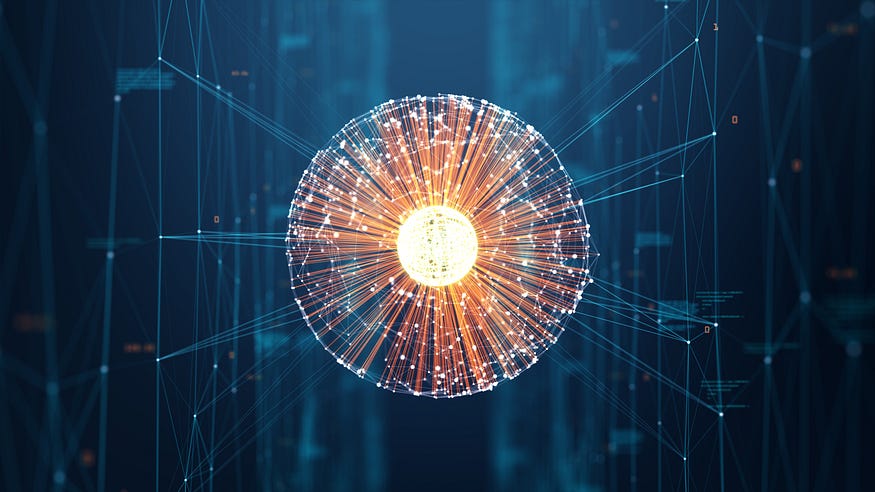Credenti™ is one of the companies leading the way with ML-based cybersecurity solutions that address evolving cyber threats.
Machine learning has become a necessity for many companies due to the increase in cyber attacks. Over 125 million cyberattacks were reported in the fourth quarter of 2021 alone, and over 20 million data breaches were reported in the first three quarters of 2022.
Despite the growing number and complexity of cyber attacks, machine learning is evolving to deal with new threats. In addition to detecting attacks in their earliest stages, machine learning can expose network vulnerabilities and predict future cyber attacks because of its ability to analyze large amounts of data and spot patterns.

What is Machine Learning’s role in cybersecurity?
A subset of artificial intelligence, machine learning makes assumptions about a computer’s behavior based on previous datasets and statistical analyses. The computer can then adjust its actions, even performing functions it wasn’t programmed to perform. Machine learning has become an essential cybersecurity tool due to these capabilities.

ADVANCED DETECTION OF THREATS
Machine learning is increasingly used to uncover threats before they can cause havoc by going through millions of files and identifying potentially hazardous ones.
During a 12-hour period in 2018, Microsoft software demonstrated this skill when cybercrooks attempted to infect over 400,000 users. Microsoft’s Windows Defender stopped the attack by using multiple layers of machine learning to identify and block potential threats. As soon as the crypto miners began digging, they were shut down.
VULNERABILITIES IN NETWORKS
The use of machine learning is becoming more proactive rather than waiting for cyber attacks to occur. The purpose of penetration testing is to find weak spots in a company’s networks, firewalls, and systems by simulating a cyberattack. A machine learning algorithm can handle this task and apply software patches, code fixes, and other solutions to address any security holes in an organization.
The ability of machine learning to learn from historical data allows it to identify unusual software and user behavior during these types of training sessions. Based on a network’s vulnerabilities, the technology can determine which cyber attacks pose the biggest threats.
REDUCING IT WORKLOAD AND COST
It takes time and energy to distribute security updates, conduct penetration tests, and monitor devices. Machine learning has the capability to automate these more mundane, repetitive tasks, so IT teams don’t have to worry about them. Thus, tech professionals can concentrate on more pressing security issues.
By applying machine learning to jobs that would otherwise require hiring another employee, organizations can also reduce hiring costs. The move is an important win for smaller businesses that can’t afford to hire more employees.
Cybersecurity challenges and machine learning
While machine learning in cybersecurity meets a wide range of IT and security needs for businesses, the technology must continue to evolve to meet the demands of an ever-changing digital environment. It may not be possible for machine learning to overcome all limitations.
CONNECTIONS EXPANDING
Hybrid and cloud environments are expected to become more popular by 2025, increasing the number of connected devices. Increasing numbers of computers, tablets, and other devices are constantly being added to company networks, putting more pressure on machine learning to account for and protect against cyberattacks.
SCHEMES FOR SOCIAL ENGINEERING
The strongest machine learning-based security system cannot compensate for human error. Phishing emails use relationships built on trust and authority to exploit social engineering strategies. Teams may fall victim to a socially engineered cyber attack if they are not trained to identify these schemes.
SHORTAGES IN TECH TALENT
More than 85 million skilled jobs are expected to go unfilled by 2030, despite IT and security being essential to companies in the digital age. Machine learning algorithms need to be maintained and interpreted by data scientists and IT workers. It may be difficult for teams to adopt ML-based cybersecurity solutions without this kind of literacy.
NEEDS FOR MACHINE LEARNING DATA
Machine learning relies on large amounts of historical data to detect patterns it can apply to future situations. Machine learning cybersecurity data isn’t common, which is the problem. Data to train machine learning algorithms may be considered sensitive material, so teams might have to be creative when looking for data.
For more information on our products contact Credenti™ at marketing@tecnics.com

